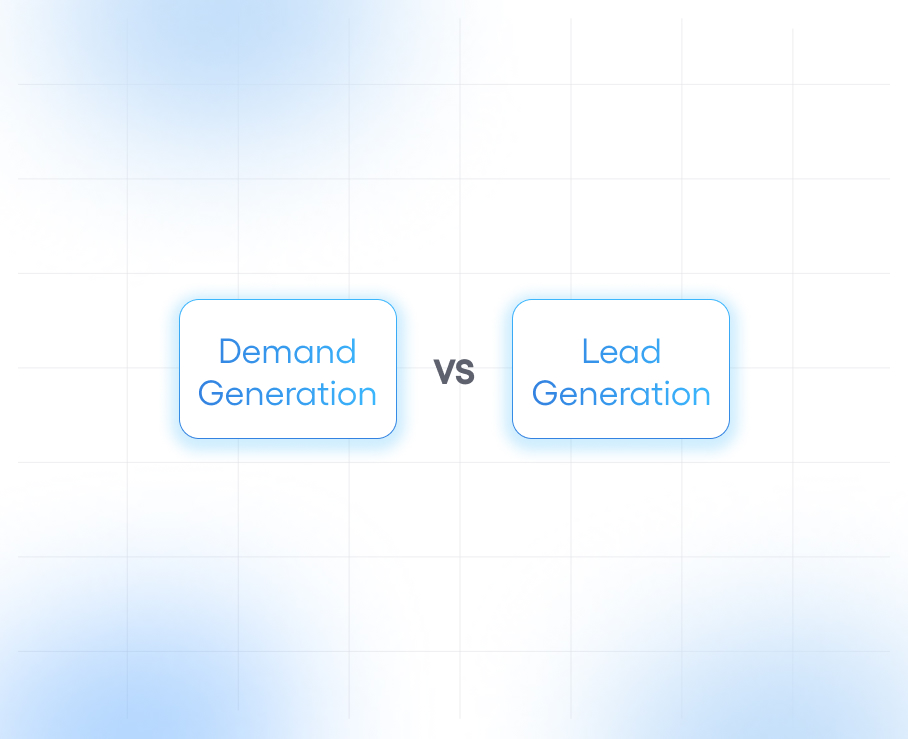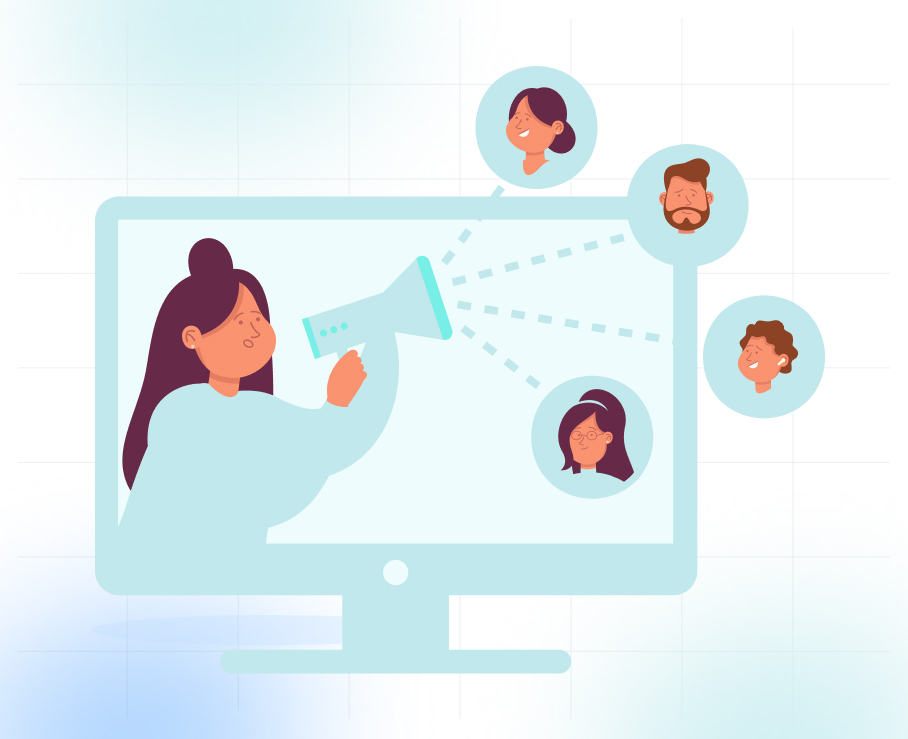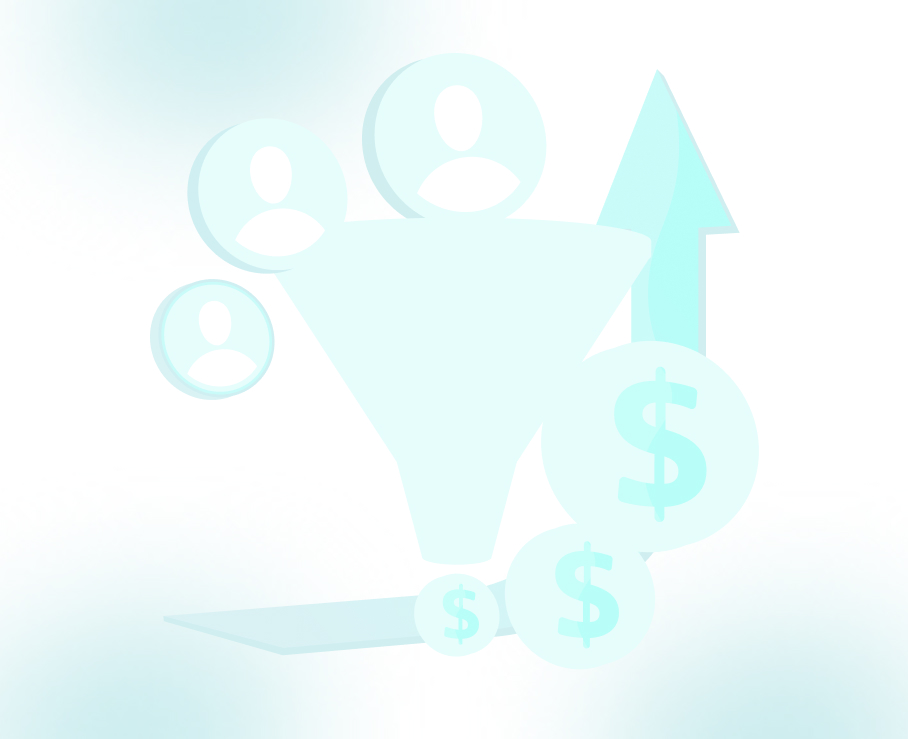
The Key Differences Between Demand Generation and Lead Generation

Imagine you’ve just launched a new business or product. You know your solution can help a lot of people, but here’s the big question: how do you get people to notice? How do you catch their attention, and once you’ve got it, how do you convert that into long-term sales?
Well, this is where two key strategies come into play: demand generation and lead generation. While they may sound similar, they serve different purposes and are used at different stages of the sales funnel.
As a marketing leader, it’s tempting to focus on lead generation right away to show immediate value. But if you know, over 60% of software buyers eventually choose the brand they were initially aware of. If you neglect the early stages of brand-building, you risk losing out on long-term success.
To strike the right balance, you need to focus on both demand generation (building awareness and trust) and lead generation (capturing and converting that interest into actual sales).
In this blog, we're going to break down demand generation vs. lead generation, explain how they work together, and show you how to leverage both strategies for optimal success.
TL;DR:
- Demand generation focuses on creating awareness and interest, while lead generation aims to capture and qualify potential customers.
- Demand generation is a long-term strategy, whereas lead generation targets immediate conversions.
- Both play distinct but complementary roles in the sales funnel, with demand generation fueling lead generation efforts.
- Understanding the differences helps businesses implement effective strategies for growth and customer acquisition.
What is Demand Generation?

At its core, demand generation is all about building awareness. This strategy focuses on attracting people’s attention and sparking interest in your product or service. It’s like creating a buzz around your brand, making sure that when people think about the challenges you solve, your company comes to mind.
In the B2B world, demand generation isn’t about asking for sales right away. Instead, it’s about positioning your brand as a thought leader and trusted solution provider. Think of it as planting seeds: the goal is to educate your audience, get them interested, and set the stage for lead generation later on.
Here are some key aspects of Demand Generation:
- Creating Brand Awareness: Demand generation helps get your name out there. When people are unfamiliar with your product, awareness-building tactics, such as social media marketing, content creation, or webinars, can help spread the word.
- Educating Your Audience: You’re not just pushing for a sale; you’re showing potential customers that you understand their pain points. Educational content like blog posts, case studies, and thought leadership articles can address these issues while highlighting how your product can be the solution.
- Long-Term Strategy: Demand generation is a marathon, not a sprint. It’s about building lasting relationships and setting up future opportunities by positioning your brand in front of the right people.
What is Lead Generation?
Lead generation, on the other hand, is much more direct. Once you’ve created awareness and interest in your product through demand generation, lead generation takes over to collect contact information from people who are showing a higher intent to buy.
At this stage, prospects have moved from awareness to consideration and are now interested in learning more. Lead generation activities like gated content and contact forms are used to capture their details so that your sales team can start nurturing them toward a purchase.
Here are some key aspects of Lead Generation:
- Capturing Leads: Lead generation is all about gathering contact information. You do this by offering something of value (like an eBook, checklist or industry report) in exchange for a visitor’s name, email, or other contact details.
- Short-Term Focus: While demand generation is a long-term play, lead generation is more immediate. It’s designed to produce quick results and convert interest into something actionable.
- Funnel Focus: Lead generation works at the bottom of the funnel. Once potential customers have shown interest, lead generation takes them to the next step in their buying journey.
Demand Generation vs. Lead Generation: What's the Difference?
While demand generation and lead generation are complementary, there are clear differences between the two strategies. Here’s how they differ:
Both strategies serve distinct purposes but work best together. While demand generation builds long-term brand equity, lead generation delivers immediate sales opportunities. A balanced mix ensures sustainable growth.
Also Read: Guide to Account-Based Marketing and Lead Generation to Boost Your B2B Success
How Demand Gen and Lead Gen Work Together to Form a Strategy?
Demand generation and lead generation are interconnected strategies that fuel each other throughout the sales funnel. To achieve successful conversion rates, both need to function in tandem, each supporting the other.
If demand generation isn’t effective, lead generation struggles to find prospects to nurture. Without awareness, there are no leads to capture, and the entire funnel falls apart. Lead generation thrives when demand generation builds that initial spark of interest. When demand gen is working, lead generation can step in and convert those interested individuals into potential customers by capturing their contact details.
For both strategies to complement each other effectively, you need to understand your audience in detail. You should know:
- Their pain points: What specific problems do they need solutions for?
- Their needs: What kind of solutions are they seeking?
- Their preferences: How do they prefer to engage with content or brands?
With this understanding, you can develop targeted content that resonates with your audience. Demand generation content should focus on addressing their challenges and providing insights into how your solution can help. Once demand is created, lead generation takes over by capturing the contact details of prospects who are already interested in your product or service.
Once you’ve captured the interest of potential leads, nurturing becomes essential. At this stage, your demand generation efforts come into play again. You’ve already framed the problem in their minds, so now it’s time to position your solution as the natural answer. By providing:
- Empirical data to back your claims
- Case studies that show your success
- Targeted outreach to keep them engaged
You guide prospects toward conversion, turning initial interest into a purchase decision.
Ultimately, both demand and lead generation are crucial for a full-funnel strategy. When used together, they drive sustainable growth by ensuring prospects move smoothly from awareness to conversion.
Also read: Top 8 Outbound Lead Generation Strategies for 2025
Best Practices for Demand Generation and Lead Generation
To optimize your demand and lead generation efforts for maximum impact, consider implementing the following best practices:
- Offer Value in Exchange for Lead Gen: To capture quality leads, consider offering valuable resources like exclusive industry reports, in-depth case studies, or access to helpful tools that resonate with your target audience's needs. By providing something useful and insightful, you not only build trust but also create a more natural entry point for prospects into your funnel, all while collecting key contact details to nurture them toward becoming a customer.
- Segment Your Leads for Personalization: Segment your leads based on their engagement level or behavior to ensure your lead-generation campaigns are personalized and relevant.
- Nurture Leads Consistently: Keep prospects engaged through email campaigns, follow-ups, and retargeting ads, guiding them down the funnel toward conversion.
- Measure, Analyze, and Optimize: Track key metrics like conversion rates, MQLs, SQLs, and engagement rates to evaluate the effectiveness of both strategies and refine your approach.
- Integrate Marketing and Sales Teams: Ensure close collaboration between your marketing and sales teams to seamlessly transition leads, improving lead quality and increasing conversion rates.
- Prioritize Lead Quality Over Quantity: Focus on capturing highly qualified leads rather than aiming for large volumes of leads, ensuring that your efforts lead to better long-term results.
- Implement Account-Based Marketing (ABM) for High-Value Targets: For B2B, consider adopting an ABM approach to target specific high-value accounts. Use hyper-targeted content and personalized outreach to engage decision-makers at these accounts.
- Use Lead Scoring to Prioritize High-Intent Prospects: Implement lead scoring systems to prioritize prospects based on their engagement, behavior, and interactions with your brand.
By following these best practices, you’ll create a balanced and effective demand and lead generation strategy that not only attracts interest but also converts prospects into loyal customers.
Also Read: How to Increase Sales with Effective Techniques
How TLM Combined Demand and Lead Generation for US Staffing
US Staffing, a recruitment firm catering to small and mid-sized businesses, was heavily investing in digital marketing but wasn’t seeing enough qualified leads. Their internal sales team was stretched thin, spending hours on calls and emails, often missing follow-ups and burning resources without consistent results.
TLM stepped in with a targeted B2B lead generation approach, identifying decision-makers in industries like accounting, IT, and manufacturing, and rolling out a four-touchpoint email campaign that used a warm, personable tone and better deliverability through TLM’s server.
Within the first month, the client began receiving direct inquiries and calls; by the third month, they were consistently generating 6–7 qualified leads each month. The shift not only improved lead flow but also freed up their sales team to focus on closing, proving that pairing smart outreach with relevant messaging makes all the difference.
TLM understands that generating high-quality leads and building brand awareness are essential for business growth. With years of experience working with B2B companies, particularly in MSP industries, we help you combine both demand and lead generation strategies effectively.
Our Demand Generation strategies create awareness and drive engagement, while Targeted Campaigning ensures we reach the most relevant audience.
Our lead generation services ensure that you’re reaching the right prospects at the right time, using personalized outreach and industry insights to capture qualified leads.
For high-value accounts, we use account-based marketing (ABM) to tailor campaigns that directly address your most important prospects. All of this is backed by real-time data and analytics to track performance and refine strategies, ensuring your efforts yield measurable results. Let’s work together to ensure that your marketing strategy isn’t just about filling the funnel but also about nurturing those leads into loyal, long-term customers.
FAQs
1. What is the difference between demand generation and sales?
Demand generation focuses on creating awareness and interest in your brand, while sales involves converting that interest into actual purchases through direct interactions and negotiations with potential customers.
2. Is demand generation a skill?
Yes, demand generation is a skill, with expertise in data analysis, marketing automation, and lead nurturing. These skills are applicable across marketing strategy, digital marketing, and sales operations roles.
3. What is the demand generation lifecycle?
The demand generation lifecycle is a continuous marketing strategy aimed at raising awareness, nurturing leads, and engaging prospects throughout their entire journey with your brand until they are ready to buy.
4. What is the rule of three for demand generation?
The rule of three suggests using at least three images or videos in each ad group across various aspect ratios (vertical, square, and landscape) to maximize reach and engagement on all platforms.






